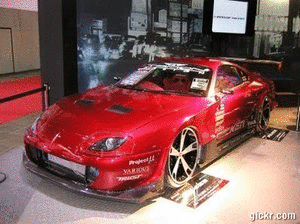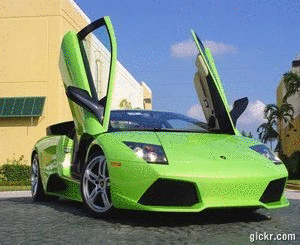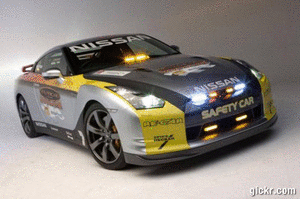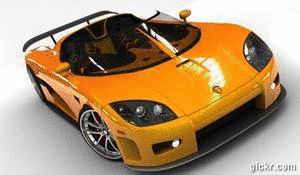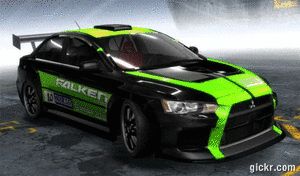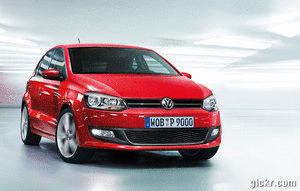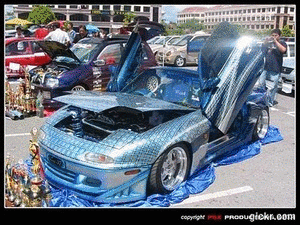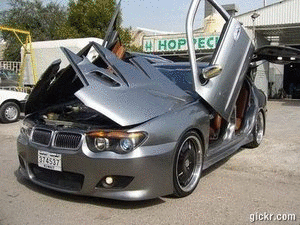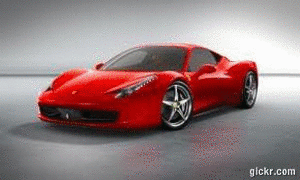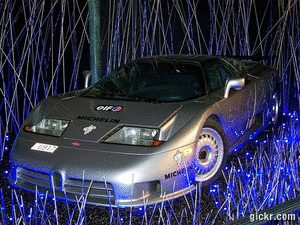Source by: Tom Goh
Credits to: Zerotohundred @ http://www.zerotohundred.com/2010/auto-news/amg-sls-launch-the-merc-amg-gullwing-super-sports-retro-masterpiece/
Here it is as promised. The Malaysian unveiling of the SLS AMG. Firstly, some facts on the Gullwing.
• 0-100km/h: 3.8 seconds
• Top Speed: 317km/h (Electronically Lmited)
• Engine: 6.3 Litre Dry-Sump V8
• Power: 571 bhp / 650nm
• Transmission: transaxle, 7-speed Double clutch (Speedshift)
• Weight: 1620 kg
• Purpose: Revival of the 1950s 300SL Gullwing
• Price: RM1,999,999.00
Kuala Lumpur, 24 March 2010 – Automotive fascination and high-tech at the highest level: the new Mercedes-Benz SLS AMG. In conjunction with its worldwide launch, Mercedes-Benz Malaysia is presenting the SLS AMG at a sneak preview event held in The Sepang Go-Kart Circuit. This Gullwing model captivates with a purist design, intelligent lightweight construction and superior handling dynamics, and is bound to cause a sensation in the super sports car segment. The new SLS AMG is nothing short of a masterpiece by Mercedes-AMG GmbH. As the first independently developed vehicle, the super sports car is the highlight in the company’s more than 40-year history. It not only takes AMG, the performance brand within Mercedes-Benz Cars, into a new era, but also demonstrates development expertise of the very highest order.
The new super sports car from Mercedes-Benz and AMG makes for an alluring proposition with its unrivalled technology package: aluminium spaceframe body with Gullwing doors, AMG 6.3-litre V8 front-mid-engine developing 420 kW/ 571 hp peak output, 650 Nm of torque and dry sump lubrication, seven-speed double-declutch transmission in a transaxle configuration, sports suspension with aluminium double wishbones and a kerb weight of 1620 kilograms based on the DIN standard – this superlative combination guarantees driving dynamics of the highest order. The front/rear weight distribution of 47 to 53 percent and the vehicle’s low centre of gravity are testimony to the uncompromising sports car concept. The ‘Gullwing’ accelerates from 0 to 100 km/h in 3.8 seconds, before
going on to a top speed of 317 km/h (electronically limited). The fuel consumption of 13.2 litres per 100 kilometres (combined) puts it at the front of the competitive lineup.
Design: purist, distinctive and passionate
The purist design of the new Mercedes-Benz SLS AMG captivates by virtue of its passionate sportiness, and its reinterpretation of the Mercedes-Benz 300 SL’s breathtaking design lines. The stylistic highlights are the striking gullwing doors, which lend an incomparable charisma to the SLS AMG. The long bonnet, the low greenhouse positioned well to the rear and the short rear end with its extendable rear aerofoil stand for dynamism, as do the long wheelbase, the wide track and large 19 and 20-inch wheels. It is not only the gullwing doors that are reminiscent of the Mercedes-Benz 300 SL, as the wide radiator grille with its large
Mercedes star, the wing-shaped cross fin and the fins on the bonnet and flanks also hark back to the legendary sports car of the 1950s.
Eyecatching features of the side view include the accented wheel arches and the pronounced shoulder line, which extends from the front to the rear end like a taut muscle. Dynamism and power are also communicated by the rear view of the SLS AMG: the gentle slope of the boot lid with the automatically extending aerofoil accentuates the impression of width, as do the flat LED tail lights.
Interior with a touch of aircraft engineering
Mercedes-Benz designers took their inspiration from the aviation world when designing the interior. The stylistic centrepiece is the dashboard, which ensures a visual impression of breadth with its muscular, wing-like profile. The four air vents with adjustable cruciform nozzles are prominently integrated into the dashboard – their shape is reminiscent of a jet engine.
The design theme of an aircraft cockpit is also reflected in the long centre console of matt-finished, solid metal. Features integrated into this include the AMG DRIVE UNIT, which enables the driver of the SLS AMG to choose a personal vehicle setup. The AMG SPEEDSHIFT DCT 7-speed sports transmission is operated by the E-SELECT lever, which resembles the thrust control of a jet aircraft.
Despite the low seating position typical of a sports car, the wide-opening gullwing doors allow easy access and egress. They require less opening space than conventional coupé doors, and can be fully opened in a standard-size garage.
Aluminium spaceframe for lightweight design and high strength
The SLS also breaks the mould when it comes to the body concept: for the first time, Mercedes-Benz and AMG are presenting a car with an aluminium chassis and body. Compared with the traditional steel design this results in a significant weight saving, as is clearly illustrated by the DIN kerb weight of 1620 kilograms.
The newly developed bodyshell consists of an aluminium spaceframe. This exclusive design combines intelligent lightweight design with outstanding strength – thus delivering superlative driving dynamics. Lightweight aluminium sections connect the frame nodes to form a sturdy structure. The large, low-set cross-sections of these aluminium sections ensure high strength, and ensure the necessary, direct transfer of drive, braking and suspension forces. The structure prevents unwanted flexibility; the vehicle responds rigidly, directly and with practically no torsion. 45 percent of the intelligent, weight-optimised aluminium spaceframe is made from aluminium sections, 31 percent from sheet aluminium, 20 percent from cast aluminium and 4 percent from steel. Maximum occupant safety requires the use of ultra-high-strength, heat-formed steel in the A-pillars. The bodyshell weighs 241 kilograms – an absolute benchmark in the super sports car segment in relation to the peak output of 420 kW/571 hp. With a DIN kerb weight of 1620 kilograms, the power-to-weight ratio is an extremely favourable 2.84 kilograms per hp.
Low centre of gravity and transverse reinforcing struts for superb dynamism
The entire vehicle concept has been designed to achieve a centre of gravity that is as low as possible. This applies both to the low connection of the powertrain and axles as well as to the arrangement of the rigidity-related bodyshell structure. Examples include the rigid flexural and torque connections between the front and rear sections and the safety passenger cell, which have been realised using force paths that are consistently as low as possible. This results not only in a low centre of gravity, but also in a harmonious and therefore efficient force path in the vehicle structure.
Passive safety at a high level
The aluminium spaceframe provides the basis for outstanding passive safety. The extensive safety features include three-point seat belts with belt tensioners and belt force limiters, and up to eight airbags: adaptive front airbags for the driver and passenger, a kneebag for each, two seat-integrated sidebags and two windowbags deploying from the waistlines of the gullwing doors.
Fine-tuned AMG 6.3-litre V8 engine developing 420 kW/571 hp
A powerful eight-cylinder Mercedes-AMG engine forms the heart of the new SLS. The fine-tuned 6.3-litre V8 engine develops 420 kW/571 hp at 6800 rpm, making the SLS AMG one of the most powerful sports cars in its segment. A power-to-weight ratio of 2.84 kg/hp comes courtesy of the low vehicle weight. The naturally aspirated engine delivers its maximum torque of 650 Nm at 4750 rpm. The SLS accelerates from 0 to 100 km/h in 3.8 seconds, and has an electronically limited top speed of 317 km/h. Bearing the internal designation M 159, the high-revving V8 engine with its displacement of 6208 cubic centimetres has been thoroughly reengineered compared to the basic M 156 engine, and boasts all the hallmarks of powerful racing engines.
The principal measures in increasing output include the all-new intake system, the reworked valve train and camshafts, the use of flow-optimised tubular steel headers and the dethrottling of the exhaust system. This results in much better cylinder charging, which feeds through into an increase in output by almost nine percent — 34 kW/46 hp. The eight-cylinder engine responds swiftly to movements of the accelerator pedal, demonstrating much more pronounced high-revving flexibility across the entire rev range. The switch to dry sump lubrication also translates into a much lower installed engine position. And lowering the vehicle’s centre of gravity has also paved the way for high lateral acceleration and exhilarating driving dynamics.
Perfect synthesis of lightweight design and strength
The use of high-strength components compensates for the increased engine loads associated with the higher output. Forged pistons, a reinforced crankshaft bearing, optimised crankcase structure, along with improved lubrication thanks to a demand-controlled, high-performance oil pump ensure optimum durability.
Despite these higher loads, the engine weight for the M 159 has been further reduced. The forged pistons as oscillating masses play a particularly valuable role in this respect, resulting in a kerb weight of 205 kilograms and, in turn, a power-to-weight ratio of 0.36 kg/hp – an unrivalled figure compared with the competition. Sophisticated catalytic converter technology enables current and future exhaust emission standards such as EU 5, LEV 2 and ULEV to be met. Enables demanding fuel consumption targets to be met. Despite its uncompromisingly sporty character, very ambitious fuel consumption targets have been met. The SLS AMG consumes 13.2 litres per 100 kilometres (combined, provisional figure), earning it a place at the top of the competitive ranking. Efficiency-enhancing measures include the familiar AMG-exclusive, friction-optimised twin-wire arc-sprayed coating on the cylinder walls as well as the on-demand, map-optimised oil supply and intelligent generator management: during the engine’s overrun phases and braking, kinetic energy is used to charge the battery, rather than being wasted by simply generating heat. Conversely, the generator is switched to no-load operation during acceleration, thus reducing the load on the engine.
Double-declutch transmission with transaxle configuration and torque tube
The AMG 6.3-litre V8 engine delivers its abundant power to the rear axle via an ultra-light carbon-fibre driveshaft – similar to the setup used in the DTM C Class racing touring car. The double-declutch transmission is mounted at the rear (transaxle principle), and connected to the engine housing via a torque tube. A carbon-fibre shaft rotates at engine speed in the torque tube. The advantages of this sophisticated solution lie in the rigid link between the engine and transmission and, in turn, the optimum support for the forces and torque generated.
The AMG SPEEDSHIFT DCT 7-speed sports transmission boasts fast gear changes with virtually no loss of tractive force – in as little as 100 milliseconds. The driver has a choice of four different driving modes: “C” (Controlled Efficiency), “S” (Sport), “S+” (Sport plus) or “M” (Manual). In the Sport, Sport plus and Manual modes the automatic double-declutching function is active; all the modes can be selected conveniently via the rotary control in the AMG DRIVE UNIT. The RACE START function provides optimum traction — as does the mechanical differential lock, which is integrated into the compact transmission housing.
Sophisticated suspension layout with double-wishbone axles
The chosen solution with a front-mid-engine plus transaxle configuration ensures an ideal front/rear weight distribution of 47 to 53 percent. Mounting the engine behind the front axle has created the ideal conditions for consummate driving dynamics with precise steering, first-class agility, low inertia with spontaneous directional changes and outstanding traction. All four wheels are located on double wishbones with a track rod, a technology that has proven itself in motor racing right through to Formula 1. With a double-wishbone axle, the wheel location and suspension functions remain separate; the spring/damper struts are supported on the lower wishbone. The double-wishbone concept with its high camber and track rigidity positively locates the wheel with minimal elastic movements, providing the driver with an optimum sense of road contact when driving at the limits.
Wishbones, steering knuckles and hub carriers at the front and rear are made entirely from forged aluminium – substantially reducing the unsprung masses; this configuration also notably improves the suspension response. The long wheelbase of 2680 millimetres not only results in outstanding straight-line stability but also low wheel load shifts, significantly reducing the vehicle’s tendency to dive and squat when braking and accelerating. The broad track width – front 1682, rear 1653 millimetres – ensures lower shifts in the wheel loads from the inner to the outer wheel when cornering, enabling the tyres to retain more grip.
Direct steering, differential lock and 3-stage ESP®
The rack-and-pinion steering gear provides a consistently direct steering feel with a constant mechanical ratio of 13.6:1, in tune with the high expectations placed on a super sports car. The power steering provides speed-sensitive assistance and improves feedback for the driver as the road speed increases: an indispensable factor for high-speed straight-line driving. Mounting the steering gear in front of the engine on the integral subframe enables the engine to be set down very low. The Gullwing model comes with 3-stage ESP® as standard, and the driver can choose the three “ESP ON”, “ESP SPORT” and “ESP OFF” modes at the touch of a button. In “ESP OFF” mode too, operating the brake pedal restores all the normal ESP® functions.
Acceleration skid is controlled in all three ESP® modes. If one of the drive wheels starts to spin, specific brake pressure is applied to improve traction significantly – especially in conjunction with the standard-fit mechanical multi-disc limited-slip differential. This means that the engine power is transferred to the road even more effectively when driving in a particularly dynamic style.
AMG ceramic composite high-performance braking system available
as an option. The AMG high-performance braking system with composite brake discs at the front ensures extremely short stopping distances even under high loads. The newly developed, optional ceramic composite brakes with even larger brake discs guarantee even better braking performance. The ceramic brake discs perform reliably at even higher operating temperatures thanks to their greater hardness, all combined with an impressive weight reduction of around 40 percent. Reducing the unsprung masses has further improved both comfort and grip, and the reduced rotating masses at the front axle ensure a more direct steering response.
Lightweight construction was also key when it came to the wheels: weight-optimised AMG light-alloy wheels – 9.5 x 19 inch (front) and 11.0 x 20 inch (rear) – based on the innovative flow-forming principle reduce the unsprung masses while improving driving dynamics and suspension comfort. In addition to the standard-fit AMG 7-spoke light-alloy wheels, 5-twin-spoke wheels and weight-optimised 10-spoke forged wheels are available as an option. 265/35 R 19 (front) and 295/30 R 20 (rear) tyres developed exclusively for the SLS AMG ensure optimum performance. A tyre pressure monitoring system is fitted as standard to permanently monitor tyre pressure in all four wheels; individual tyres are shown on the display. The SLS AMG as a masterpiece in AMG’s more than 40-year history. The new SLS AMG is a true masterpiece on the part of Mercedes-AMG GmbH.
As the first independently developed car, the super sports car is the highlight of the company’s more than 40-year history. With this car AMG, the performance brand within Mercedes-Benz Cars, is not only entering a new era, but also demonstrating development expertise of the highest order. AMG was established in 1967 by Hans Werner Aufrecht and Erhard Melcher, and is considered a pioneer in the field of vehicle tuning for motorsports. Following the cooperation agreement concluded in 1990 with Daimler-Benz AG, the company was gradually incorporated into what at the time was DaimlerChrysler AG in 1999. On 1 January 2005, DaimlerChrysler AG acquired 100 percent of the shares. Today Mercedes-AMG GmbH is a vehicle manufacturer in its own right, and AMG is the performance brand within Mercedes-Benz Cars. This subsidiary of Daimler AG specialises in unique, high-performance vehicles; its sporty saloons, SUVs, coupés, cabriolets, roadsters and specially built one-off models constitute a product portfolio which meets its customers’ every wish. The product range encompasses a total of 16 AMG high-performance models with outputs ranging from 265 kW/360 hp to 450 kW/612 hp.
Mercedes-AMG has overall responsibility for developing the design, aerodynamics, interior as well as the powertrain, engine, suspension, brakes and electronics – right up to granting final approval for production of the complete AMG vehicle.
The company is also in charge of all marketing and sales-related activities for its products.
The SLS AMG is priced at RM1,999,999.00 (Private Registration without Insurance).
For more information, log on to www.mercedes-benz.com.my.
|
|
|---|
Superautomix 2010
Get ready for the most anticipating SuperAutoMix 2010 brought to you by Axia Com SDN BHD.
So mark your calendars right now or jot it down on something so you remember of it, SUPERAUTOMIX will take place from 2nd till 4th of July 2010 and we will have exciting automotive activities and hot shows day and night! Enjoy!
Bukit Jalil
Kuala Lumpur.
Saturday 3rd July 2010 10.00AM - 12 Midnight
Sunday 4th July 2010 10.00AM - 10.00PM
Children - T.B.A
Floor plan would be as shown as below:
Contact Us
SUPERAUTOMIX is organized by AXIACOM SDN BHD (co. no: 675927-X)
Address:
Level 26, Tower 2
ETIQA Twins
11 Jalan Pinang
50450 Kuala Lumpur
Malaysia
Phone: +6.03.9207 9693
Fax: +6.03.9207 9788
Website: www.axiacom.com.my
Email: info@axiacom.com.my
For information on SUPERAUTOMIX:
Email: info@superautomix.com.my
Competitors with technical questions should contact EKLERN via email:
eklern@superautomix.com.my
or by calling 012.233 2303 or 017.335 9228
So mark your calendars right now or jot it down on something so you remember of it, SUPERAUTOMIX will take place from 2nd till 4th of July 2010 and we will have exciting automotive activities and hot shows day and night! Enjoy!
Location:
National Sports ComplexBukit Jalil
Kuala Lumpur.
Date & Time:
Friday 2nd July 2010 5.30PM - 11.00PMSaturday 3rd July 2010 10.00AM - 12 Midnight
Sunday 4th July 2010 10.00AM - 10.00PM
Admissions
Adult - T.B.AChildren - T.B.A
Parking
Ample parking space is available at carpark B & C.Floor plan would be as shown as below:
Contact Us
SUPERAUTOMIX is organized by AXIACOM SDN BHD (co. no: 675927-X)
Address:
Level 26, Tower 2
ETIQA Twins
11 Jalan Pinang
50450 Kuala Lumpur
Malaysia
Phone: +6.03.9207 9693
Fax: +6.03.9207 9788
Website: www.axiacom.com.my
Email: info@axiacom.com.my
For information on SUPERAUTOMIX:
Email: info@superautomix.com.my
Competitors with technical questions should contact EKLERN via email:
eklern@superautomix.com.my
or by calling 012.233 2303 or 017.335 9228
Fact or Fiction: Cracked Fuel Lines
Sorry for the poor image above but this it the Cracked Fuel Line I'm trying to show
Fuel Lines rarely need replacement, but over time rubber begin to age and harden, developing cracks and leaks. When they begin to go bad, the results can be catastropic. Vibrations, Rubbing against other components, or impact can all cause an old line to rupture or crack, leading to engine fires or fuel starvation. Check all fuel lines, for stress fractures or corrosion. The image above was the cracked fuel line from an '05 STI with less than 9656.064 km ( 6000 miles )on the odometer.
Toyota Camry Sportivo 3.0L V6 ( Australia Spec )
Proudly present you Toyota Camry Sportivo equipped with 3.0L engine with 6 cylinders. My friend own this ride in Australia and I manage to ask him to take some shot of the car. Although there are just a few but I'm already satisfy with it, I wonder how come there's a big difference between Malaysia's Toyota Camry compared to the one in Australia. The one in Australia is just so nice and looks more sporty. Pictures speaks a thousand words.
History of the Toyota Camry Solara
In September 2001, the 2002 model year Toyota Camry was released as a larger sedan (taking styling cues from the successful Vitz, Corolla, and Solara), but without a station wagon for the first time. Due to station wagons losing popularity to minivan and crossover SUVs, the Camry wagon was replaced by the Sienna minivan, the Venza crossover, (both in North America only) and the Highlander SUV, which are all the three vehicles utilizing the Camry's platform.
Camry Solara aka Daihatsu Altis @ Sixth generation (ACV30, MCV30; From Year 2001–2006)
Main article: Toyota Camry Solara
Until the 2003 model year, the Camry Solara remained on the sixth generation chassis, and received only minor styling upgrades to the front and rear ends. However, the Solara did receive the same 2.4-liter 2AZ-FE I4 engine that was available on the Camry sedan.
Front View
Side View
Rear View
History of the Toyota Camry Solara
In September 2001, the 2002 model year Toyota Camry was released as a larger sedan (taking styling cues from the successful Vitz, Corolla, and Solara), but without a station wagon for the first time. Due to station wagons losing popularity to minivan and crossover SUVs, the Camry wagon was replaced by the Sienna minivan, the Venza crossover, (both in North America only) and the Highlander SUV, which are all the three vehicles utilizing the Camry's platform.
Camry Solara aka Daihatsu Altis @ Sixth generation (ACV30, MCV30; From Year 2001–2006)
Main article: Toyota Camry Solara
Until the 2003 model year, the Camry Solara remained on the sixth generation chassis, and received only minor styling upgrades to the front and rear ends. However, the Solara did receive the same 2.4-liter 2AZ-FE I4 engine that was available on the Camry sedan.
Ford Start Concept unveiled in Beijing
Source by: Anthony Lim
Credits to: http://star-motoring.com/blog/permalink.asp?id=1146
Ford has unveiled its Start Concept vehicle at the 2010 Beijing Auto Show. Powered by a 1.0l, three-cylinder EcoBoost engine, the design of the vehicle was inspired by the world's fast-growing mega cities and the unique needs and mindset of their inhabitants. With heavy traffic, limited parking and fuel efficiency being key concerns among urban drivers, the car provides a vision into a future sporty, small-car package that meets a multitude of primary driving objectives, particularly among first-time buyers.

Design elements include the use of lightweight material and the incorporation of efficient aerodynamics, and the car also utilises smart phone technology to perform a multitude of in-car functions.

The company says that besides the design exploration aspects into the feasibility of a future small car, the vehicle is also effectively a preview of the smallest engine yet in the growing EcoBoost engine family; Ford says the technology will come into production in the near future, offering low CO2 emissions but with the power and drivability comparable to the company's larger petrol inline-four cylinder powerplants.
Credits to: http://star-motoring.com/blog/permalink.asp?id=1146
Ford has unveiled its Start Concept vehicle at the 2010 Beijing Auto Show. Powered by a 1.0l, three-cylinder EcoBoost engine, the design of the vehicle was inspired by the world's fast-growing mega cities and the unique needs and mindset of their inhabitants. With heavy traffic, limited parking and fuel efficiency being key concerns among urban drivers, the car provides a vision into a future sporty, small-car package that meets a multitude of primary driving objectives, particularly among first-time buyers.

Design elements include the use of lightweight material and the incorporation of efficient aerodynamics, and the car also utilises smart phone technology to perform a multitude of in-car functions.

The company says that besides the design exploration aspects into the feasibility of a future small car, the vehicle is also effectively a preview of the smallest engine yet in the growing EcoBoost engine family; Ford says the technology will come into production in the near future, offering low CO2 emissions but with the power and drivability comparable to the company's larger petrol inline-four cylinder powerplants.
Formula Drift Singapore 2010
Source by: http://paultan.org/2010/04/26/formula-drift-singapore-2010-joy-for-djan-despair-for-some/
Credits to: Paul Tan
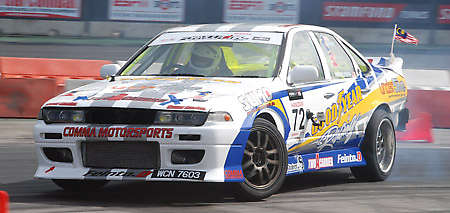
For a moment, the dark clouds looked like they had gathered from afar, planning to rain on the parade that is Formula Drift Singapore 2010. The fact that it didn’t happen was perhaps something good, as many of the 42 participating drifters already found the tight course challenging without the rain. Which was why instead of the traditional top 32 shootout on race day, FD Singapore started off today with a “top 26″ battle – yesterday’s top three qualifiers Ryuji Miki, Atsushi Murata and Tengku Djan were given byes in the first knockout round (29 qualified in total).
While Saturday Qualifying is done solo, Sunday’s knockout format requires drifters to race side-by-side in tandem battles, with the top qualifiers going up against the bottom in the list. At this stage, Team Goodyear Malaysia’s Michael Gan limped home with a mechanical failure (broken LSD) when fighting with fellow Malaysian Ivan Lau, who went on to to lose a quarter final battle between teammate and eventual runner up Tan Tat Wei.
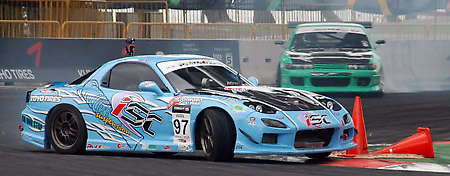
Goodyear Malaysia’s Hanizam a.k.a Loyai, who was paired with Malaysian Wong Kee Thong (AE86) got into more drama when he was involved in a collision. The Boostzone Tyrepac driver was deemed to be at fault, and Hanizam got through. All the big names also passed this hurdle except for Singaporean poster boy drifter Ivan Lim who drives for Goodyear Binter. Malaysian Kumho driver Ee Yoong Chern also ended his journey here but Lee Kim Wan (Team ISC, FD RX-7), who really caught my eye yesterday, totally outclassed Felix Lim from Falken Singapore (whole team of 3 flopped), and was in.

The top 16 round kicked off with one of the big names in Formula Drift, Ryuji Miki being knocked out by Indonesian Rhenadi Arinton, but the upsets didn’t stop there. Goodyear Malaysia’s Loyai wasn’t exactly delighted to be paired with highly rated Japanese drifter and top qualifier Atsushi Murata, but not only did he surprised the Red Bull driver, the judges, commentator and audience started to notice him, prompting Jarod DeAnda, the voice of Formula Drift to call him “a force to be reckoned with”. When the Japanese led (2 runs per battle, each takes turn to lead), Loyai followed tightly, but on the second run, the following Murata took off his A31’s rear bumper. Murata was at fault and the Goodyear driver started to look like a giant killer.
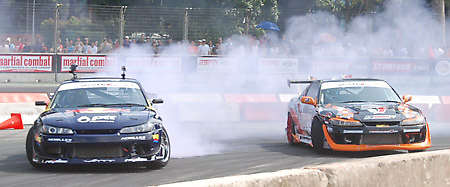
This stage saw the exit of promising Thai youngster SS Flora (Goodyear) and Malaysian Ser Ming Hui (Exotic Tuner), more popularly known as Ah Fai. “Thai Drift King” Kiki bowed out to Tengku Djan in the highest profile battle so far. It was an easy win for Djan – Kiki spun while following, and spewed out his trademark purple tyre smoke that can blind the follower, but to no avail. Easy win for the eventual winner.
Top 8. As if it couldn’t get any harder for Loyai, he was up against Fanga Dan from New Zealand. The Kiwi does his thing in a RB26 powered Holden, and is one of Goodyear’s imported drivers for this event alongside the likes of Ryuji Miki. Poor Hanizam was banged by Miki in practice earlier in the day, had zero practice prior to qualifying due to a broken windscreen and was fresh from heavy battle with favourite Murata.

He once again got me screaming like a mad man with some superb door-to-door driving when following Fanga Dan. When he led, the Kiwi wasn’t even close. Yours truly, the crowd, and everyone back in the pits thought he had won, but the judges (after long deliberation) gave the tie to Dan. I’m no drift expert, but this looked to be a questionable call. Perhaps it’s like football; when stakes are high, and hard calls have to be made by the referee, it’s always easier to side with the big guns. I spoke to the man and his crew after the race, and they were all shocked and gutted at the outcome. Had he gone through, I believe he would have gone on to the podium. The humble 38-year old deserved better for what he put in throughout the weekend, so it was a shame!
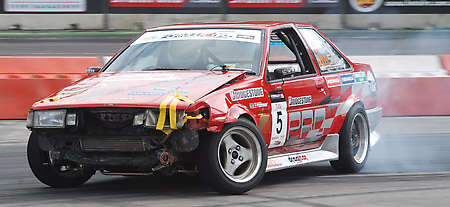
The rest of the action saw Djan and Tan Tat Wei bulldoze their way to the finals. The former eliminated Lee Kim Wan and Fanga Dan easily, while TTW’s route included wins over Thai pretty boy Davide and Indonesia’s Rhenadi. Goodyear’s Fanga Dan was third. To be honest, the final wasn’t thrilling at all after what we’ve seen before – Djan took the opportunity to show his class and skill, and had an easy outing against his teammate. No need for One More Time, the winner was clear. It’s back to back wins for Djan after his success in last December’s Formula Drift Malaysia; the Singaporean crowd know and love him too as he won the same event here last year.
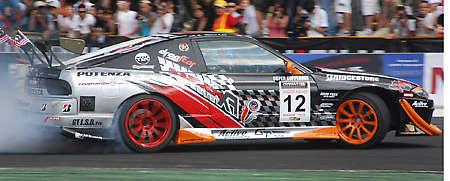
Will Djan’s dominance continue? Or will the others step up their game and give the Tandem Assasin a run for his money? The four-stop Formula Drift Asia series will be heading to Indonesia and Thailand after this, before ending in Malaysia. Enjoy the smoking hot tyres and ladies in the massive gallery below!
Credits to: Paul Tan

For a moment, the dark clouds looked like they had gathered from afar, planning to rain on the parade that is Formula Drift Singapore 2010. The fact that it didn’t happen was perhaps something good, as many of the 42 participating drifters already found the tight course challenging without the rain. Which was why instead of the traditional top 32 shootout on race day, FD Singapore started off today with a “top 26″ battle – yesterday’s top three qualifiers Ryuji Miki, Atsushi Murata and Tengku Djan were given byes in the first knockout round (29 qualified in total).
While Saturday Qualifying is done solo, Sunday’s knockout format requires drifters to race side-by-side in tandem battles, with the top qualifiers going up against the bottom in the list. At this stage, Team Goodyear Malaysia’s Michael Gan limped home with a mechanical failure (broken LSD) when fighting with fellow Malaysian Ivan Lau, who went on to to lose a quarter final battle between teammate and eventual runner up Tan Tat Wei.

Goodyear Malaysia’s Hanizam a.k.a Loyai, who was paired with Malaysian Wong Kee Thong (AE86) got into more drama when he was involved in a collision. The Boostzone Tyrepac driver was deemed to be at fault, and Hanizam got through. All the big names also passed this hurdle except for Singaporean poster boy drifter Ivan Lim who drives for Goodyear Binter. Malaysian Kumho driver Ee Yoong Chern also ended his journey here but Lee Kim Wan (Team ISC, FD RX-7), who really caught my eye yesterday, totally outclassed Felix Lim from Falken Singapore (whole team of 3 flopped), and was in.

The top 16 round kicked off with one of the big names in Formula Drift, Ryuji Miki being knocked out by Indonesian Rhenadi Arinton, but the upsets didn’t stop there. Goodyear Malaysia’s Loyai wasn’t exactly delighted to be paired with highly rated Japanese drifter and top qualifier Atsushi Murata, but not only did he surprised the Red Bull driver, the judges, commentator and audience started to notice him, prompting Jarod DeAnda, the voice of Formula Drift to call him “a force to be reckoned with”. When the Japanese led (2 runs per battle, each takes turn to lead), Loyai followed tightly, but on the second run, the following Murata took off his A31’s rear bumper. Murata was at fault and the Goodyear driver started to look like a giant killer.

This stage saw the exit of promising Thai youngster SS Flora (Goodyear) and Malaysian Ser Ming Hui (Exotic Tuner), more popularly known as Ah Fai. “Thai Drift King” Kiki bowed out to Tengku Djan in the highest profile battle so far. It was an easy win for Djan – Kiki spun while following, and spewed out his trademark purple tyre smoke that can blind the follower, but to no avail. Easy win for the eventual winner.
Top 8. As if it couldn’t get any harder for Loyai, he was up against Fanga Dan from New Zealand. The Kiwi does his thing in a RB26 powered Holden, and is one of Goodyear’s imported drivers for this event alongside the likes of Ryuji Miki. Poor Hanizam was banged by Miki in practice earlier in the day, had zero practice prior to qualifying due to a broken windscreen and was fresh from heavy battle with favourite Murata.

He once again got me screaming like a mad man with some superb door-to-door driving when following Fanga Dan. When he led, the Kiwi wasn’t even close. Yours truly, the crowd, and everyone back in the pits thought he had won, but the judges (after long deliberation) gave the tie to Dan. I’m no drift expert, but this looked to be a questionable call. Perhaps it’s like football; when stakes are high, and hard calls have to be made by the referee, it’s always easier to side with the big guns. I spoke to the man and his crew after the race, and they were all shocked and gutted at the outcome. Had he gone through, I believe he would have gone on to the podium. The humble 38-year old deserved better for what he put in throughout the weekend, so it was a shame!

The rest of the action saw Djan and Tan Tat Wei bulldoze their way to the finals. The former eliminated Lee Kim Wan and Fanga Dan easily, while TTW’s route included wins over Thai pretty boy Davide and Indonesia’s Rhenadi. Goodyear’s Fanga Dan was third. To be honest, the final wasn’t thrilling at all after what we’ve seen before – Djan took the opportunity to show his class and skill, and had an easy outing against his teammate. No need for One More Time, the winner was clear. It’s back to back wins for Djan after his success in last December’s Formula Drift Malaysia; the Singaporean crowd know and love him too as he won the same event here last year.

Will Djan’s dominance continue? Or will the others step up their game and give the Tandem Assasin a run for his money? The four-stop Formula Drift Asia series will be heading to Indonesia and Thailand after this, before ending in Malaysia. Enjoy the smoking hot tyres and ladies in the massive gallery below!
Subscribe to:
Comments (Atom)
